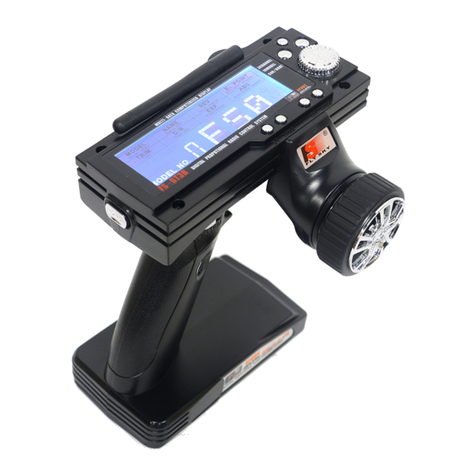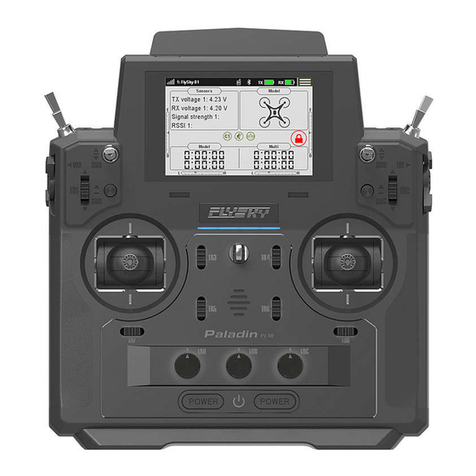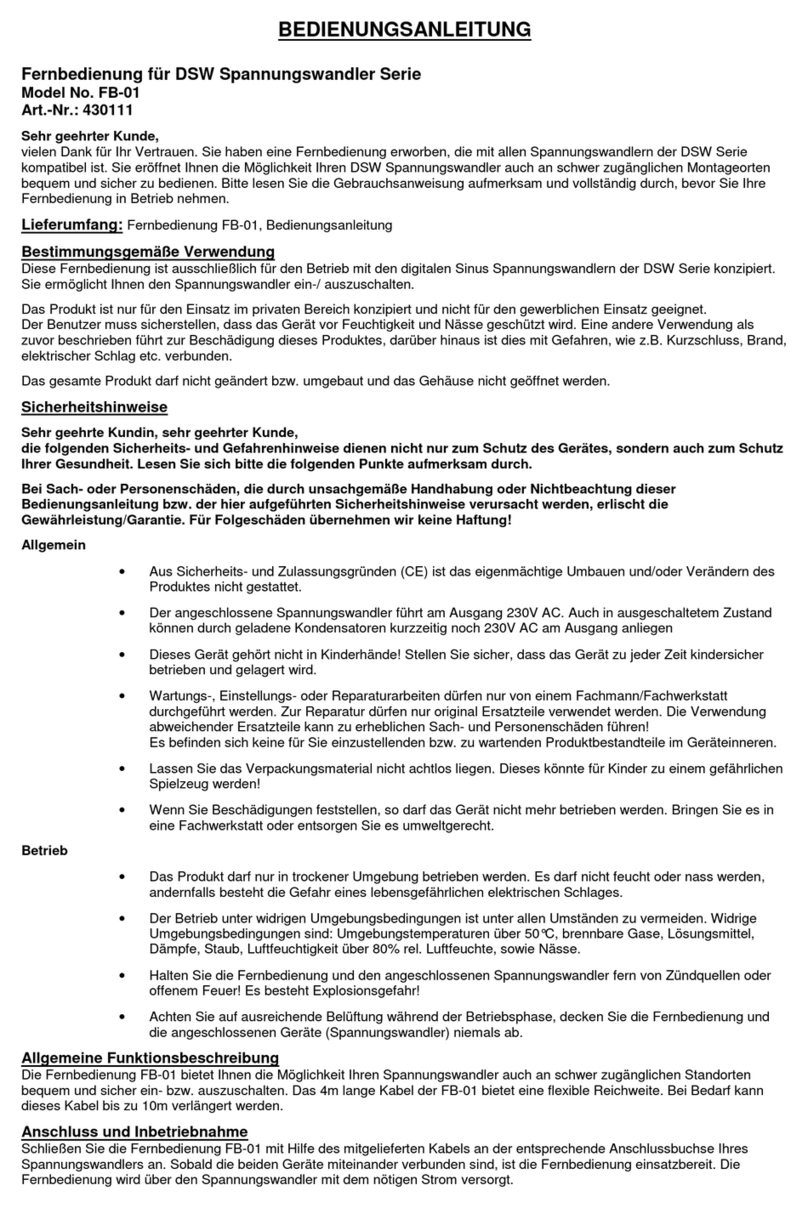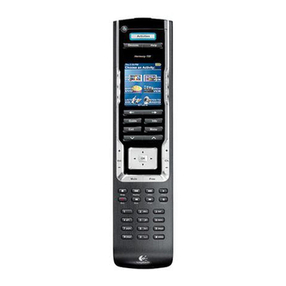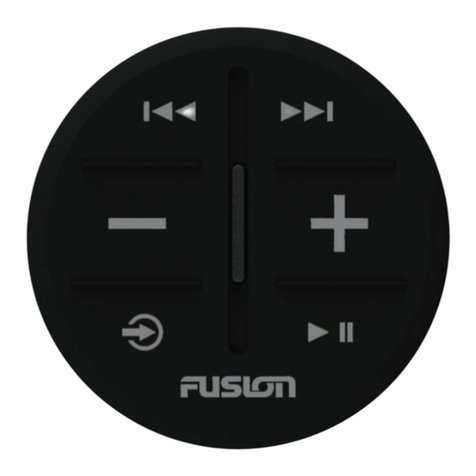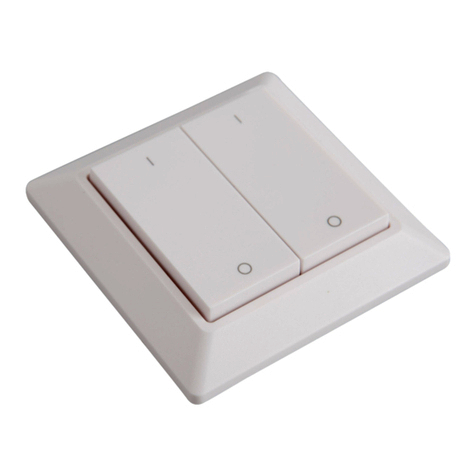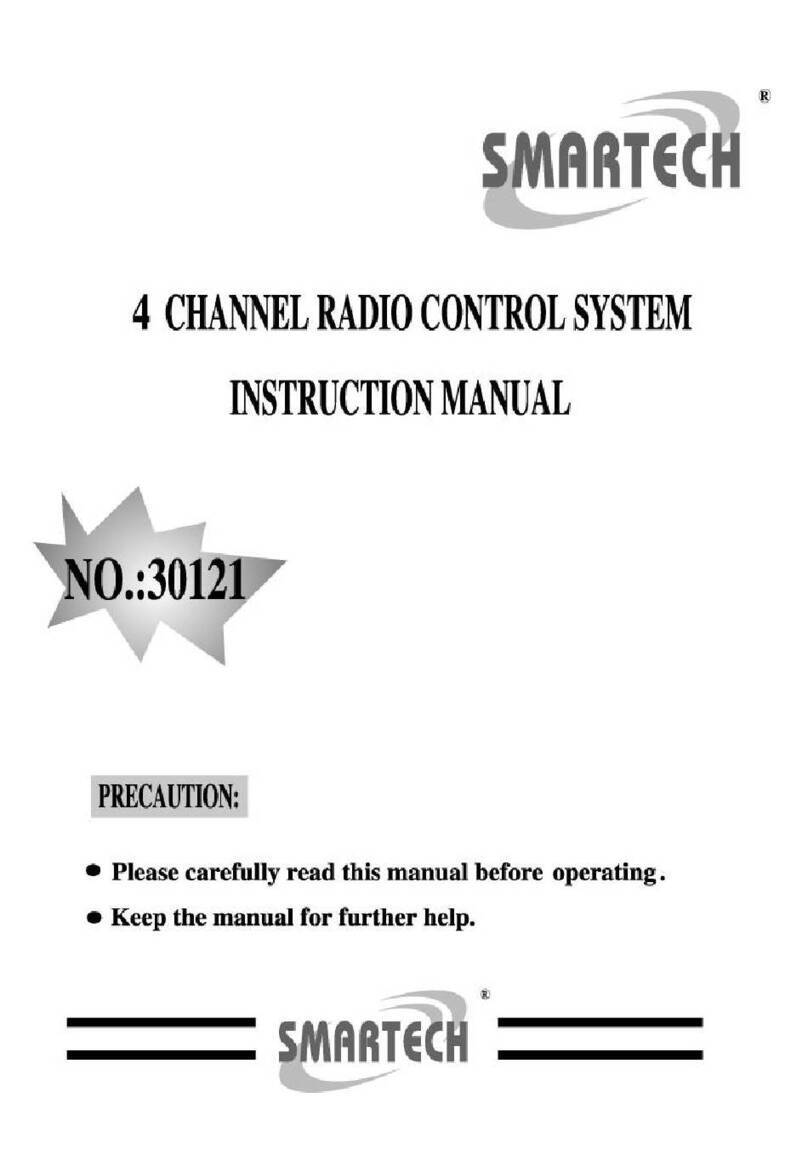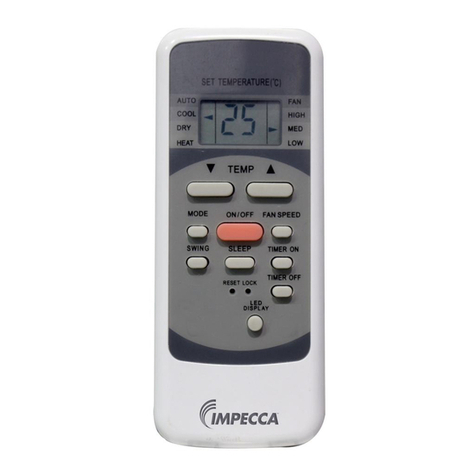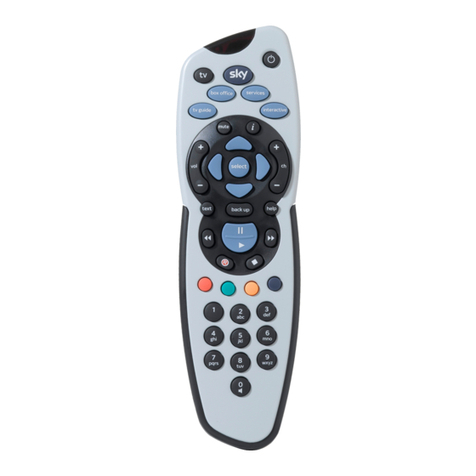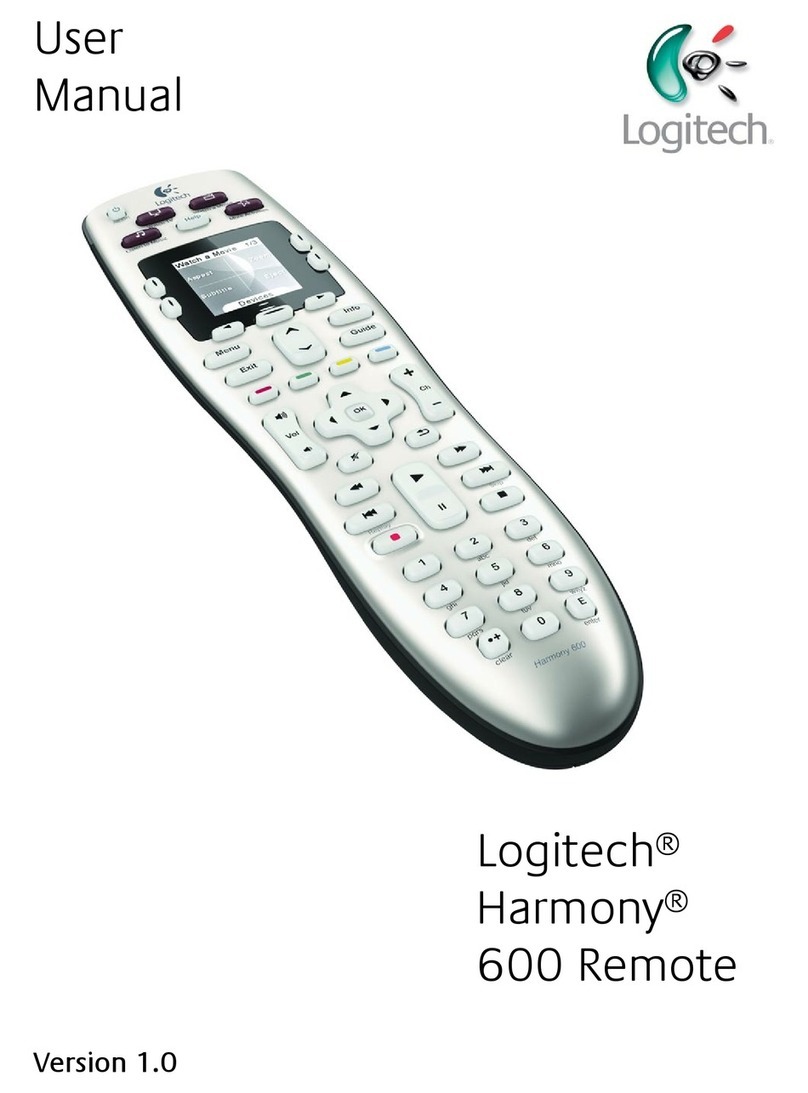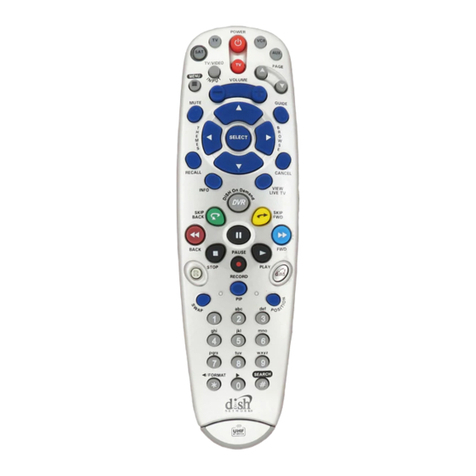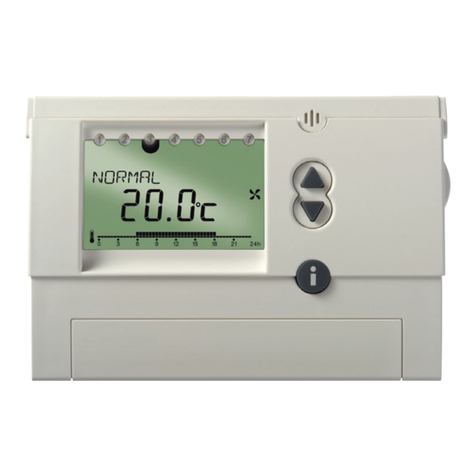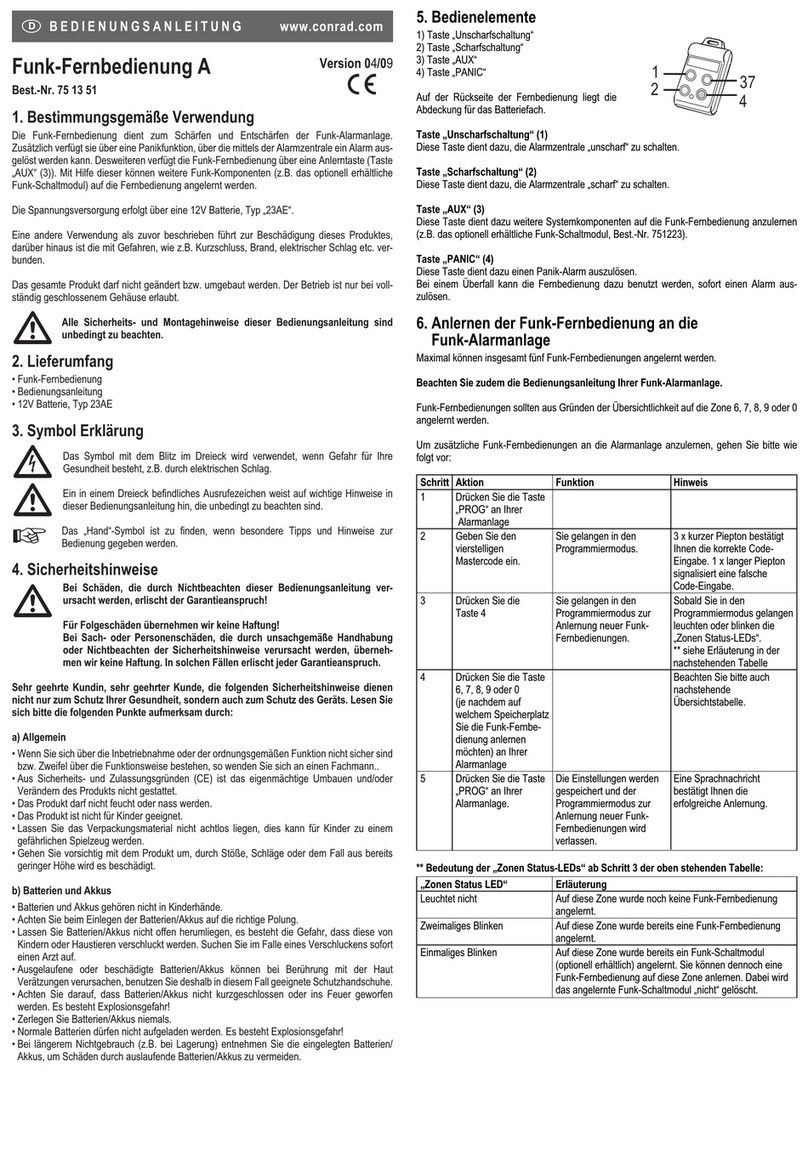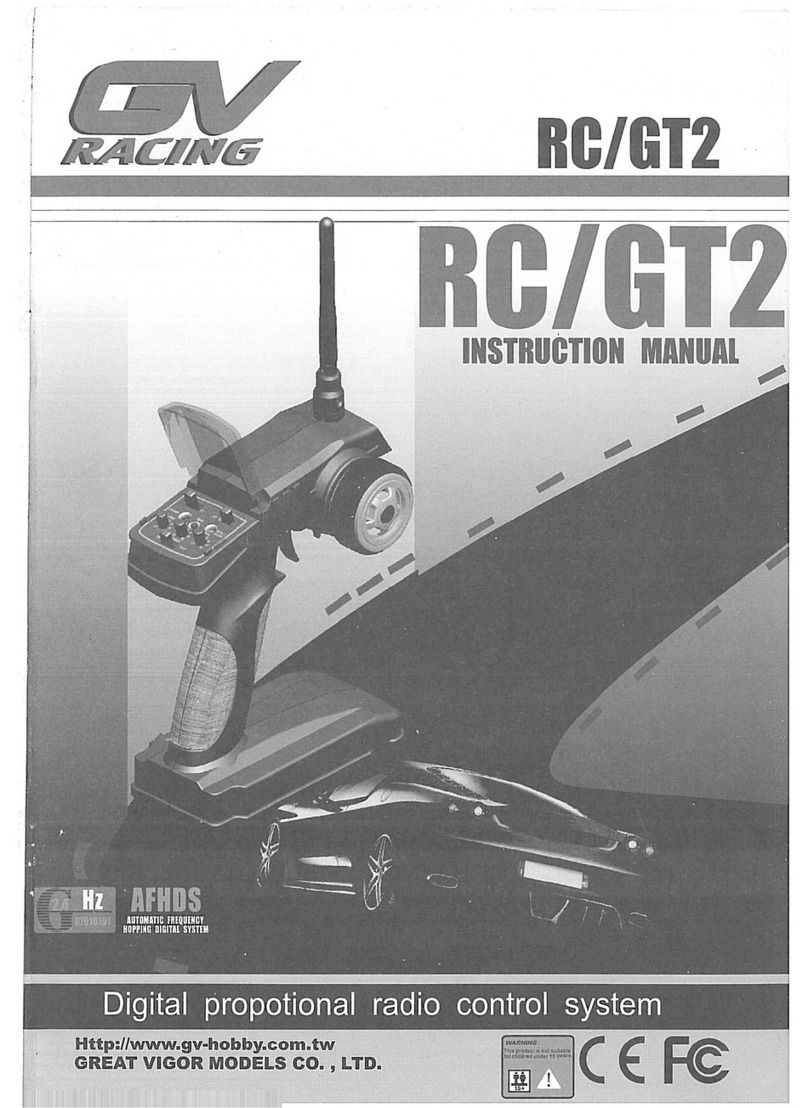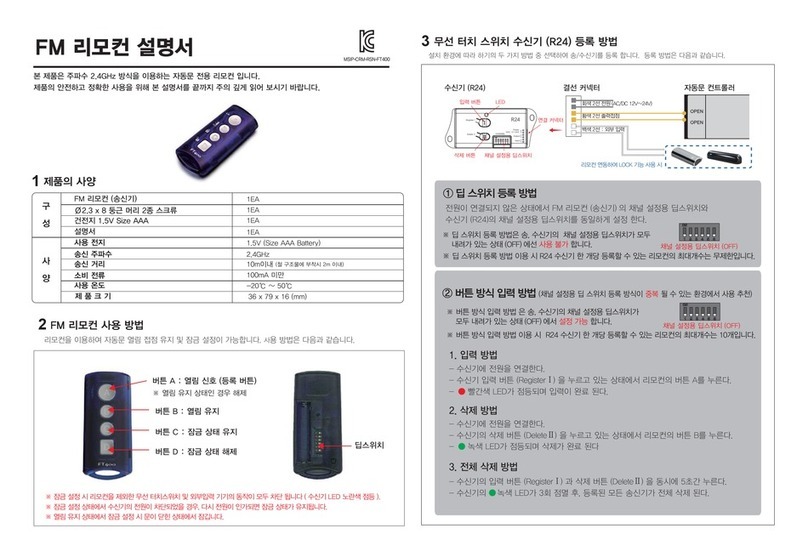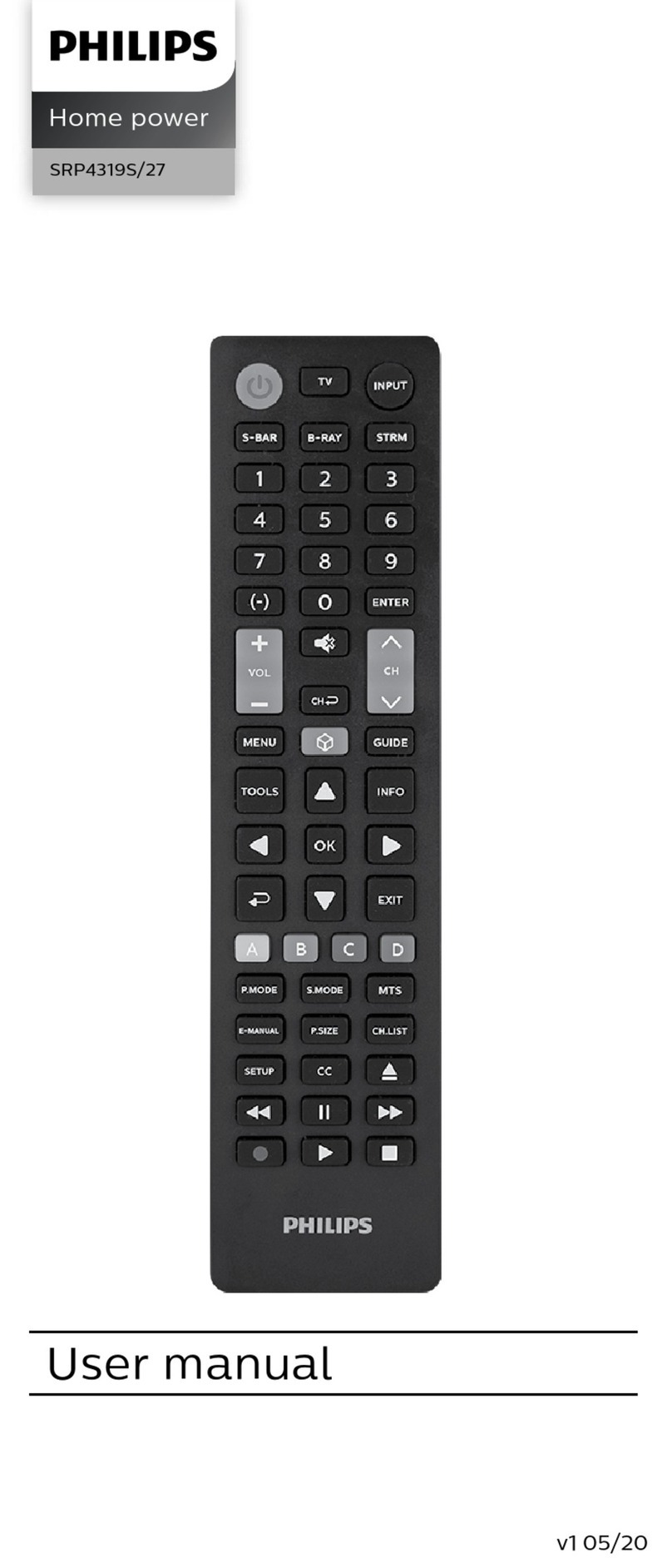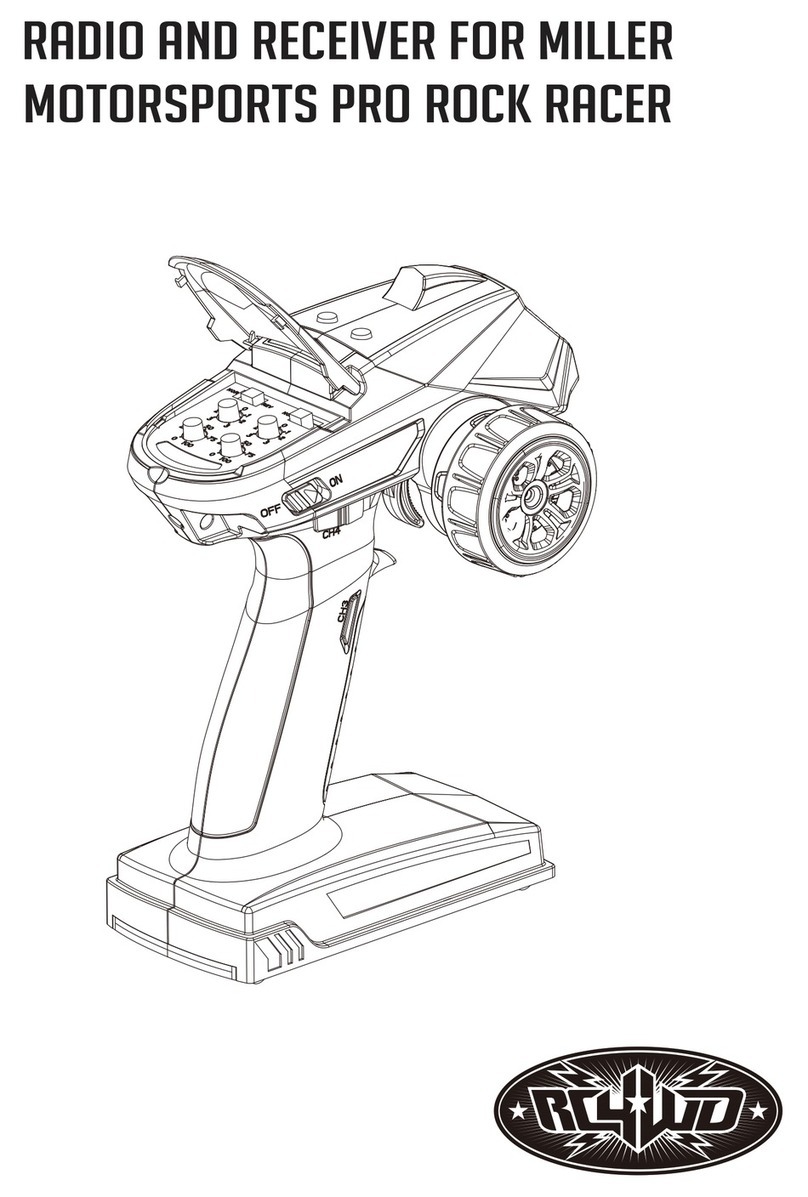Fly Sky FS-i4X User manual

Digital proportional radio control system
WARNING:
This product is only for 15 years
old or above
INSTRUCTION
MANUAL
Digital proportional radio control system
Copyright ©2013-2017
Flysky RC model technology co., ltd

1
Thank you for purchasing our product, an ideal radio system for beginners or experienced users alike.
Read this manual carefully before operation in order to ensure your safety, and the safety of others or the
safe operation of your system.
If you encounter any problem during use, refer to this manual first. If the problem persists, contact your
local dealer or visit our service and support website for help:
www.flysky-cn.com/service.asp

2
Digital proportional radio control system
Table of Contents
1. Safety ................................................................................................................................................4
1.1 Safety Symbols ................................................................................................................................................ 4
1.2 Safety Guide....................................................................................................................................................... 4
2. Introduction .....................................................................................................................................6
2.1 System Features................................................................................................................................................ 6
2.2 Transmitter Overview .................................................................................................................................... 7
2.2.1 Transmitter Antenna ............................................................................................................................ 8
2.2.2 Gimbals and Sticks................................................................................................................................. 8
2.2.3 Status Indicator....................................................................................................................................... 8
2.2.4 Trims ........................................................................................................................................................... 8
2.3 Receiver Overview .......................................................................................................................................... 8
2.3.1 Receiver Antenna ................................................................................................................................... 8
2.3.2 Status Indicator .................................................................................................................................... 8
2.3.3 Connectors .............................................................................................................................................. 9
3. Getting Started ..............................................................................................................................10
3.1 Transmitter Battery Installation.................................................................................................................10
3.2 Connecting the Receiver and Servos .....................................................................................................10
4. Operation Instructions .................................................................................................................11
4.1 Power On ..........................................................................................................................................................11
4.2 Switching Between AFHDS 2A and AFHDS...........................................................................................11
4.3 Binding...............................................................................................................................................................12
4.4 Pre-use Check .................................................................................................................................................12
4.5 Changing Stick Modes .................................................................................................................................12
4.6 Power Off..........................................................................................................................................................13
5. Function Descriptions....................................................................................................................14
5.1 Flight Controls.................................................................................................................................................14
5.2 Reverse Function............................................................................................................................................15
5.3 V-Mix..................................................................................................................................................................15
6. System Customization ...................................................................................................................16
6.1 Switching Channel Asignments ................................................................................................................16
7. Customization Selection Sheet.....................................................................................................20
8. Package Contents...........................................................................................................................21
9. Product Specification ....................................................................................................................22
9.1 Transmitter Specification (FS-i4X) ............................................................................................................22
9.2 Receiver Specification (FS-A6) ..................................................................................................................22
Appendix 1 FCC Statement ..............................................................................................................23

3
This page is intentionally left blank.

4
Digital proportional radio control system
1. Safety
1.1 Safety Symbols
Pay close attention to the following symbols and their meanings. Failure to follow these warnings could
cause damage, injury or death.
Danger • Not following these instructions may lead to serious injuries or death.
Warning • Not following these instructions may lead to major injuries.
Attention • Not following these instructions may lead to minor injuries.
1.2 Safety Guide
Prohibited Mandatory
• Do not use the product at night or in bad weather like rain or thunderstorm. It
can cause erratic operation or loss of control.
• Do not use the product when visibility is limited.
• Do not use the product on rain or snow days. Any exposure to moisture (water
or snow) may cause erratic operation or loss of control.
• Interference may cause loss of control. To ensure the safety of you and others,
do not operate in the following places:
• Near any site where other radio control activity may occur
• Near power lines or communication broadcasting antennas
• Near people or roads
• On any pond when passenger boats are present
• Do not use this product when you are tired, uncomfortable, or under the
influence of alcohol or drugs. Doing so may cause serious injury to yourself or
others.
• The 2.4GHz radio band is limited to line of sight. Always keep your model in
sight as a large object can block the RF signal and lead to loss of control.
• Never grip the transmitter antenna during operation. It significantly degrades
signal quality and strength and may cause loss of control.
• Do not touch any part of the model that may generate heat during operation, or
immediately after use. The engine, motor or speed control, may be very hot and
can cause serious burns.

5
• Misuse of this product may lead to serious injury or death. To ensure the safety
of you and your equipment, read this manual and follow the instructions.
• Make sure the product is properly installed in your model. Failure to do so may
result in serious injury.
• Make sure to disconnect the receiver battery before turning off the transmitter.
Failure to do so may lead to unintended operation and cause an accident.
• Ensure that all motors operate in the correct direction. If not, adjust the
direction first.
• Make sure the model flies within a certain distance. Otherwise, it could cause
loss of control.

6
Digital proportional radio control system
2. Introduction
The FS-i4X transmitter and FS-A6 receiver constitute a 4-channel 2.4GHz AFHDS 2A digital proportional
computerized R/C system. It is compatible with fixed-wing and helicopters.
2.1 System Features
The AFHDS 2A (Automatic Frequency Hopping Digital System Second Generation) developed and
patented by FLYSKY is specially developed for all radio control models. Offering superior protection
against interference while maintaining lower power consumption and high reliable receiver sensitivity,
FLYSKY's AFHDS technology is considered to be one of the leaders in the RC market today.
Bidirectional Communication
Capable of sending and receiving data, each transmitter is capable of receiving data
from temperature, altitude and many other types of sensors, servo calibration and i-BUS
Support.
Multi-channel Hopping Frequency
This systems bandwidth ranges from 2.4055GHz to 2.475GHz. This band is divided in
140 channels. Each transmitter hops between 16 channels (32 for Japanese and Korean
versions) in order to reduce interference from other transmitters.
Omni-directional Gain Antenna
The high efficiency Omni-directional high gain antenna cuts down on interference, while
using less power and maintaining a strong reliable connection.
Unique ID Recognition System
Each transmitter and receiver has it's own unique ID. Once the transmitter and receiver
have been paired, they will only communicate with each other, preventing other systems
accidentally connecting to or interfering with the systems operation.
Low Power Consumption
The system is built using highly sensitive low power consumption components,
maintaining high receiver sensitivity, while consuming as little as one tenth the power of a
standard FM system, dramatically extending battery life.

7
2.2 Transmitter Overview
Handle
Antenna
Lanyard Hook
Right Gimbal
Left Gimbal
Trim 3
Trim 1
Trim 4Trim 2
Power Switch
Bind Button
V-MIX Reverse
Switches
Trainer Port
Battery Compartment

8
Digital proportional radio control system
2.2.1 Transmitter Antenna
Precautions:
• For best signal quality, make sure that the antenna is at about a 90 degree angle to the model. Do not
point the antenna directly at the receiver.
• Never grip the transmitter antenna during operation. It significantly degrades the RF signal quality
and strength and may cause loss of control.
2.2.2 Gimbals/Sticks
There are two sticks on the transmitter and two preset modes for the functions of the sticks.
2.2.3 Status Indicator
The status indicator is used to indicate the power and working status of the transmitter.
• Off: the transmitter is powered off.
• Green light: Battery is fully charged (5.3-6V)
• Orange light: Battery is half full (4.8-5.3V)
• Red light: Low Battery (4.2-4.8V)
2.2.4 Trims
There are 4 trims affecting stick functionality, one for rudder (Channel 4), elevator (Channel 2), throttle
(Channel 3) and ailerons (Channel 1). Each time a trim is toggled, the trim will move one step. It is possible
to make quicker trim adjustments by holding the trim in the desired direction. When the trim position
reaches the middle, the transmitter beeps in a higher tone.
2.3 Receiver Overview
2.3.1 Receiver Antenna
Attention • For best signal quality, ensure that the receiver is mounted away from motors
or metal parts.
2.3.2 Status Indicator
The status indicator is used to indicate the power and working status of the receiver.
• Off: the power is not connected.
• Lit in red: the receiver is on and working.
• Flashing quickly: the receiver is binding.
• Flashing slowly: the bound transmitter is off or signal is lost.
Antenna To Servos
BAT/BIND

9
2.3.3 Connectors
The connectors are used to connect the parts of model and the receiver.
• CH1 to CH6: used to connect the servos, power or other parts.
• BAT: used to connect the bind cable for binding, and the power cable during normal operation.
Rudder
Switch
Throttle
Elevators
Ailerons
To Battery
Receiver

10
Digital proportional radio control system
3. Getting Started
Before operation, install the battery and connect the system as instructed below.
3.1 Transmitter Battery Installation
Danger • Only use specified battery.
Danger • Do not open, disassemble, or attempt to repair the battery.
Danger • Do not crush/puncture the battery, or short the external contacts.
Danger • Do not expose to excessive heat or liquids.
Danger • Do not drop the battery or expose to strong shocks or vibrations.
Danger • Always store the battery in a cool, dry place.
Danger • Do not use the battery if damaged.
Follow the steps to install the transmitter battery:
1. Open the battery compartment.
2. Insert 4 fully-charged AA batteries into the compartment. Make sure that the batteries makes good
contact with the battery compartment's contacts with the correct polarity.
3. Replace the battery compartment cover.
3.2 Connecting the Receiver and Servos
Connect the receiver and the servos as indicated below:

11
4. Operation Instructions
After setting up, follow the instructions below to operate the system.
4.1 Power On
Follow the steps below to turn on the system:
1. Check the system and make sure that:
• The batteries are fully charged and installed properly.
• The receiver is off and correctly installed.
2. Toggle the power switch to its upward position.
3. Connect the receiver power supply to the BAT port on the receiver.
The system is now powered on.
4.2 Switching Between AFHDS 2A and AFHDS
To switch between AFHDS 2A and AFHDS , hold both stick at the bottom left corner and turn on the
transmitters power at the same time. Wait for 1 second then turn the power off again to save the new
setting.
AFHDS : The LED will light up for one second.
AFHDS 2A : The LED will light up for one second followed by a sound.
RF Protocol Receiver
AFHDS GR3F, GR3E, R6B, R9B
AFHDS 2A A3, A6, iA4B, iA6, iA6B, iA10,
iA10B

12
Digital proportional radio control system
4.3 Binding
The transmitter and receiver have been pre-bound before delivery. If you are using another transmitter or
receiver, follow the steps below to bind the transmitter and receiver:
1. Connect the supplied bind cable to the BAT port on the receiver.
2. Insert power into any other port.
3. Hold the bind key while powering on the transmitter to enter bind mode.
• When the receiver and transmitter have bound the red LED will stop flashing.
4. Remove the power and bind cable from the receiver. Then connect the power cable to the BAT port.
5. Turn on the transmitter.
6. Check the servos' operation. If anything does not work as expected, restart this procedure from the
beginning.
4.4 Pre-use Check
Before operation, perform the following steps to check the system:
1. Check to make sure that all servos and motors are working as expected.
2. Check operating distance: one operator holds the transmitter, and another one moves the model
away from the transmitter. Check the model and mark the distance from where the model starts to
lose control.
Danger • Stop operation if any abnormal activity is observed.
Danger • Make sure the model does not go out of range.
Attention • Sources of interference may affect signal quality.
4.5 Changing Stick Modes
There are two sticks on the transmitter and two preset modes for the functions of the sticks. Usually the
stick with the self centring feature on both axes will be mapped to the Elevator, while the other to the
Throttle.
The functions of the sticks in respective modes are shown below:
Mode 1 Mode 2
8[JJKX 'ORKXUT
+RK\GZUX
:NXUZZRK
8[JJKX 'ORKXUT
:NXUZZRK
+RK\GZUX
You can switch the stick modes to suit your operation habit. To switch the sticks:
1. Take the battery out from the transmitter. Loosen the four screws that hold the rear cover shown in
green on page 13.
2. Carefully take the back off the transmitter and disconnect the cables connected to it.
3. Unscrew the screws around the gimbals, marked in green in the picture on page 13.
4.2

13
4. Switch the gimbals to the opposite side. Make sure the gimbals have been rotated 180 degrees so
that the wires are facing towards the middle of the system.
5. Move hat of the S16 connector so that one side is on the L or R pin, L for when the self centring stick
is on the left side and R for when its on the right.
Left Seat
Right Seat
S16
6. Reconnect the back's cables, reattach the back and tighten the screws.
4.6 Power Off
Follow the steps below to turn off the system:
1. Disconnect the receiver power.
2. Toggle the transmitter's power switch to its low position.
Danger • Make sure to disconnect the receiver power before turning off the transmitter.
Failure to do so may lead to damage or serious injury.

14
Digital proportional radio control system
5. Function Descriptions
5.1 Flight Controls (Default Mode 2)
The sticks are used for controlling the aircraft, each stick has 2 functions. The right stick controls pitch and
roll, the left stick controls throttle and yaw.
Pitch (Right Stick Up/Down)
Roll (Right Stick Left/Right)
Yaw (Right Stick Left/Right)
UP
DOWN
LEFT RIGHT
LEFT RIGHT

15
Throttle (Right Stick Up/Down)
5.2 Reverse Function
Channels 1-4 can be reversed, to reverse a channel:
• 1. Test the servo/throttle to make sure that the action corresponds as expected with the transmitters
controls.
• 2. If the direction of travel is wrong then toggle corresponding switch located at the bottom of the
transmitter, labled as RUD (Rudder), THR (Throttle), ELE (Elevator), AIL (Aileron). Up position being
reverse and down position being normal.
• 3. Test the servos again to make sure the direction of travel is correct.
5.3 V-MIX
The V-MIX function (5.6) is used for models that have no rudder.
No rudder: Creates a mix between channels 1 and 2, ailerons and elevators.
THROTTLE UP
THROTTLE DOWN

16
Digital proportional radio control system
6. System Customization
The FS-i4X's switches and knobs can be moved
to other channels. Or if using receivers with more
channels, the system can be expanded with extra
switches or knobs.
By default, from left to right, the switches and knobs
are channels 5, 6, 7, 8, 9 and 10.
FS-A6/FS-iA6B 4CH, 5CH, 6CH
FS-iA10B 4-10CH
5
6 7 8 9
10
6.1 Switching Channel Asignments
To change a switch or knobs channel, the system
must be taken apart. The first step is taking the back
cover off.
• 1. Remove any batteries from the system and
replace the battery cover.
•
• 2. Remove the screws market in green.
Note: Make sure the screw driver you are using
is not too big or too small. Failure to do so could
damage the head of the screw.
• 3. Carefully pry the front and back apart, this
may take some force.
Note: Don't pull the pieces too far apart, doing so
could damage cables attacking the front and back
together.
• 4. Carefully disconnect the cables connecting the front to the back.

17
• 5. Carefully remove the screws marked below in red.
Note: Make sure you keep the screws in a safe place.
• 6. Remove the power button cover from the front side of the system. To do so simply put the end of a
screw driver under and and gently lift it off.
• 7. Carefully pull the circuit board out and towards you.
Note: Remember that there are wires on the other side of the board. To avoid damage do not pull or put
any tension on the wires.
Note: Make sure that the wires are fitted along beside each of the gimbals as show above.
Note: Make sure that all switches are installed with the correct orientation shown above.

18
Digital proportional radio control system
• 8. The connectors for channels 5 - 10 are
marked in red on the diagram . On the
circuit board each channel is labled, making
it easy to find the correct channel. Follow
the cables leading from each connector to
identify which switch or knob goes to each
channel.
• 9. Carefully remove the desired connectors
from the board.
Note: Do not pull on the wires themselves, doing so
may damage the connector or wire.
• 10. Replace the desired switch/knob connectors into the corrsponding channel slot.
• 11. Put the circuit board back in place and replace the screws.
Note: Make sure that you don't over tighten the screws, this could lead to damage of the system or the
screws.
• 12. Put the back cover back in place, and squeeze the handle until the two pieces click together.
• 13. Replace the cover screws.
• 14. Replace the power button cover.
To change a toggle:
• 1. Take the receiver apart following the above instructions.
• 2. Remove the toggles connector from the circuit board.
• 3. Unscrew the plate holding the toggle in place on the front of the transmitter.

19
Adding a knob:
• 1. Using a flathead screwdriver carefully
release the clips holding the plate on the
front. The clips are marked in red in the
picture .
• 2. Carefull remove the cover plate and replace
it with the new coverplate designed to hold 2
knobs.
• 3. Insert the 2 knobs from the back to the
front. Make sure the knobs have the correct
orientation shown in the picture .
Note: First make sure that the plastic knob cover
has been remove, otherwise it will not fit.
Make sure that the wires are layed down beside
the gimbals in order to stop them from catching
on any moving parts.
• 4. Secure the knob by placing the nut on
the threads and tightening. Make sure that
the nut is not too tight as this could lead to
damage to the plastic.
• 5. Place the plastic knob onto the metal rod.
Make sure it lines up correctly, do not force
the knob onto the rod.
Table of contents
Other Fly Sky Remote Control manuals
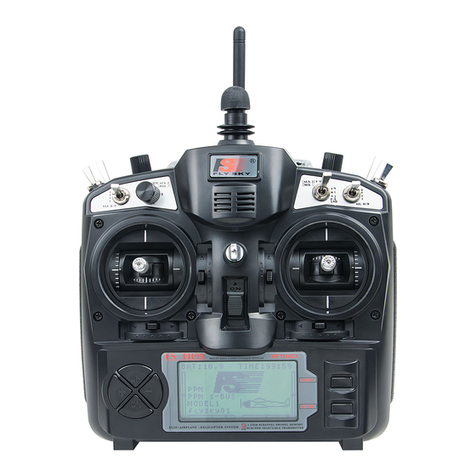
Fly Sky
Fly Sky FS-TH9X User manual
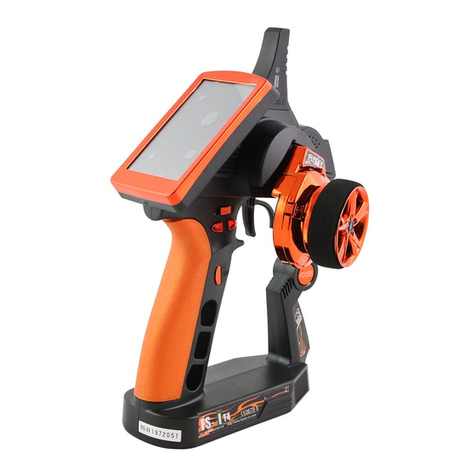
Fly Sky
Fly Sky FS-IT4 User manual
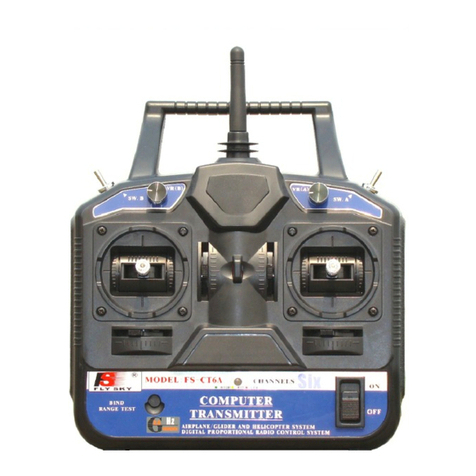
Fly Sky
Fly Sky FS-CT6A User manual
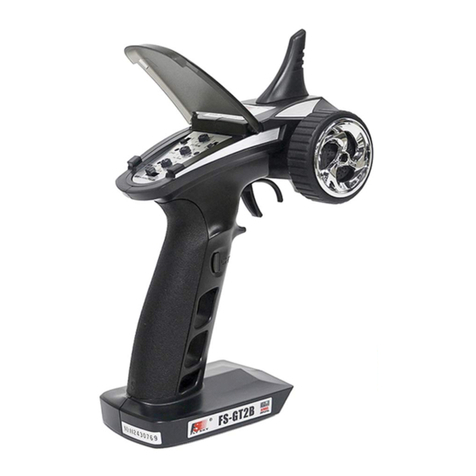
Fly Sky
Fly Sky FS-GT2B User manual
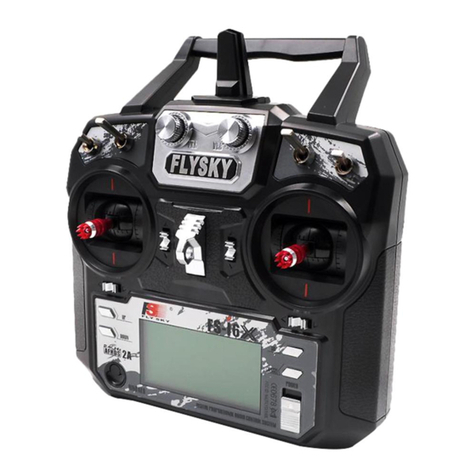
Fly Sky
Fly Sky FS-i6X User manual
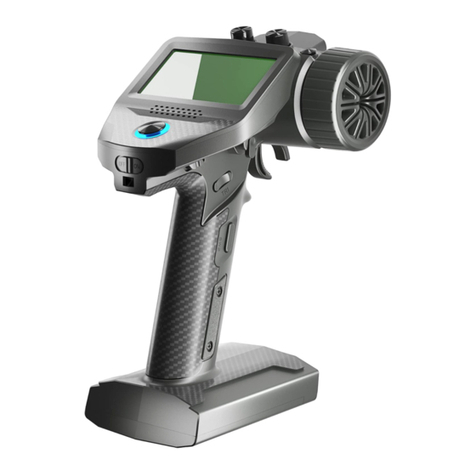
Fly Sky
Fly Sky FS-G7P User manual
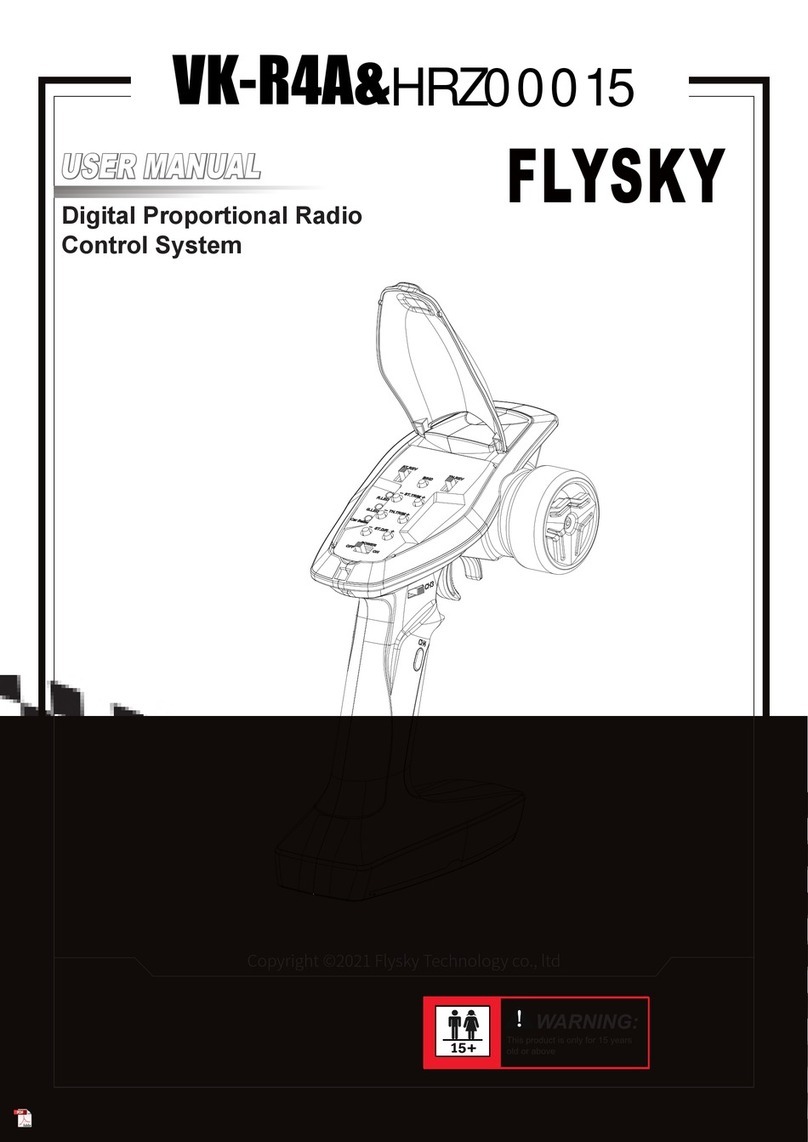
Fly Sky
Fly Sky VK-R4A User manual

Fly Sky
Fly Sky FS-MG41 User manual

Fly Sky
Fly Sky Noble NB4 User manual
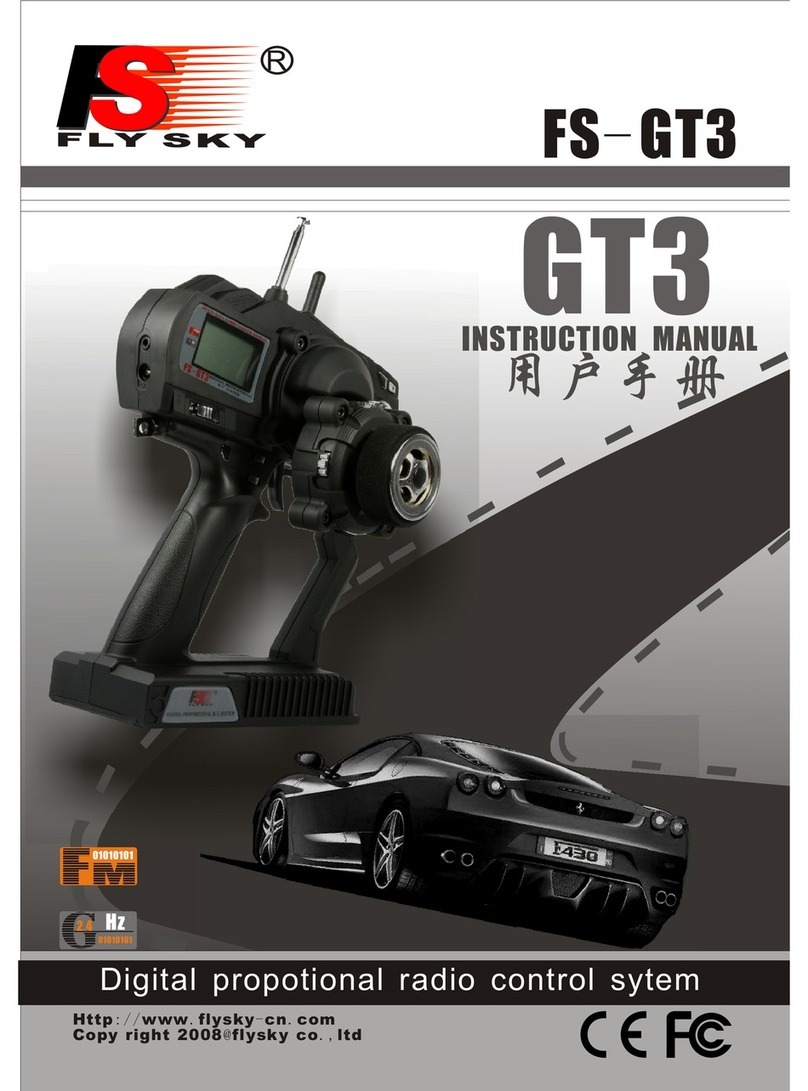
Fly Sky
Fly Sky FS-GT3 User manual

Fly Sky
Fly Sky FS-TH9X User manual
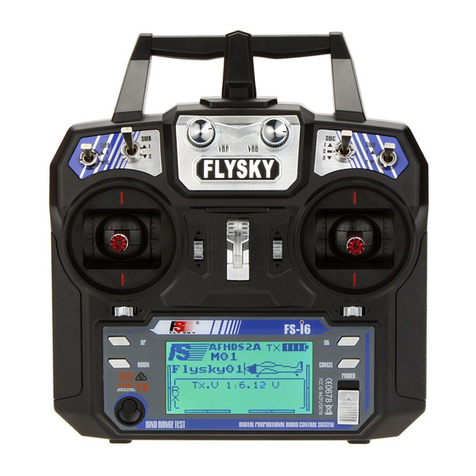
Fly Sky
Fly Sky FS-i6 User manual
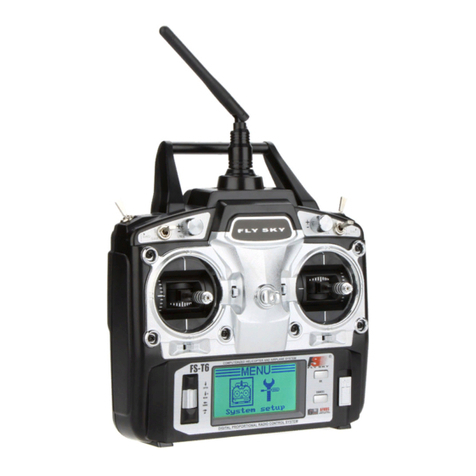
Fly Sky
Fly Sky FS-T6 User manual
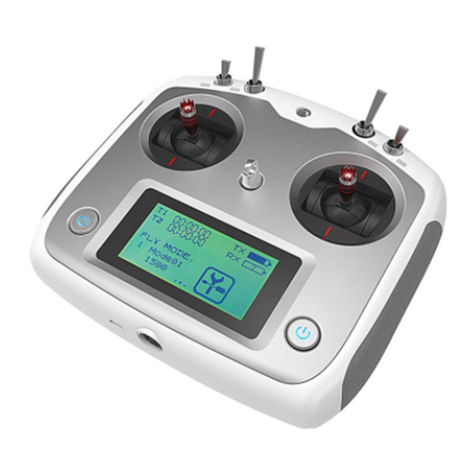
Fly Sky
Fly Sky FS-i6S User manual

Fly Sky
Fly Sky FS-CT6A User manual
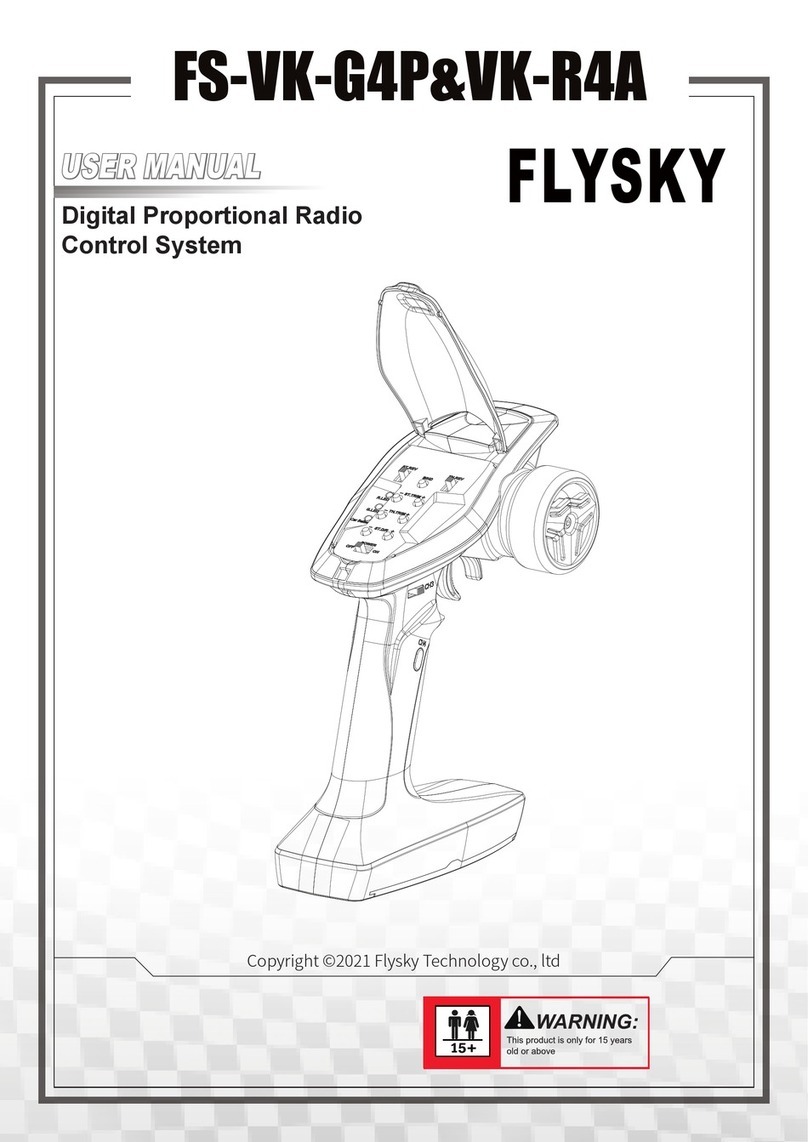
Fly Sky
Fly Sky FS-VK-G4P User manual
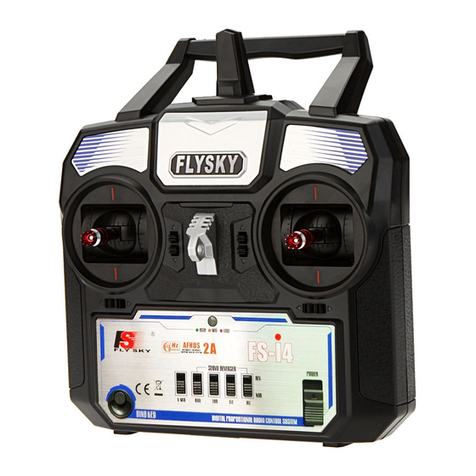
Fly Sky
Fly Sky FS-I4 User manual
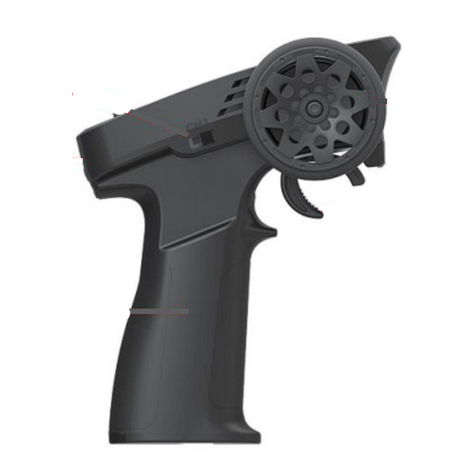
Fly Sky
Fly Sky FMS-G3 User manual

Fly Sky
Fly Sky FS-T6 User manual
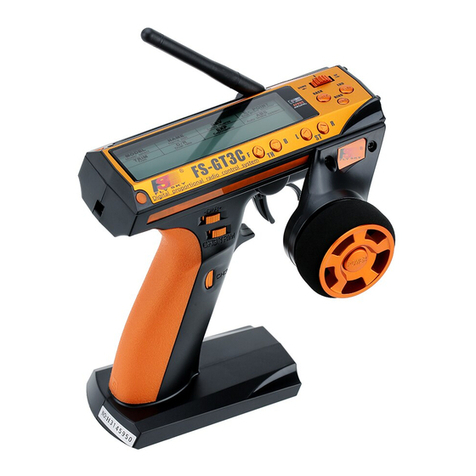
Fly Sky
Fly Sky FS-GT3C User manual
